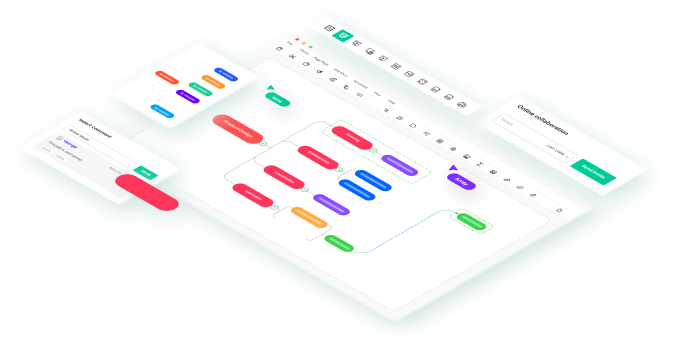Zara’s rise in the fashion world becomes clear when you explore Zara’s marketing mix analysis (4Ps). It simply shows how the brand balances product, price, place, and promotion.
Founded in Spain in 1975, Zara quickly became fashion lovers’ first choice. It quickly reacts to fashion trends and customer needs. Fresh collections in stores and online make sure shoppers always find something new to enjoy.
In this article, we’ll show how Zara grows globally, and keeps shoppers engaged. We will also share practical tips you can use to create your own marketing mix.
In this article
1. Overview of Zara

Zara is one of the world’s top fashion brands, known for turning the latest trends into stylish clothes fast. As of 2025, it has over 2,200 stores in more than 95 countries, making it a go-to name for fashion lovers everywhere.
Let’s take a quick look at Zara’s key details to see what makes it such a global success.
| Aspect | Information |
| Founded | 1975 (as Zorba) in A Coruña, Spain |
| Founders | Amancio Ortega & Rosalía Mera |
| Headquarters | Arteixo, Galicia, Spain |
| Parent Company | Inditex (Industria de Diseño Textil Sociedad Anónima) |
| Employees | Approximately 162,000 globally |
| Fiscal Year End | January 31. |
| Annual Revenue | €38.6 billion (FY 2024) |
| Net Income | €5.9 billion (FY 2024) |
| Brand Value | Estimated at $17.8 billion |
| Global Presence | Over 7,400 stores in 202 markets worldwide, including 116 online markets |
| Sustainability Initiatives | Focus on eco-friendly materials, recycling, and reducing textile microfibers |
| Official Sites | zara.com |
| Official PDF | Inditex Annual Report 2024 |
2. Key Parts of Zara Marketing Mix (4Ps)
Have you ever wondered why Zara is loved everywhere? It’s because the brand is smart with the 4Ps: Product, Price, Place, and Promotion. These four things help the brand give customers what they want, stay popular, and grow around the world. Let’s see how Zara does it.
2.1 Zara Product Strategy
Zara’s product strategy focuses on speed and style. The brand keeps a close eye on trends and quickly turns them into ready-to-wear pieces. Clothes are made in small batches, so they sell out quickly and feel more exclusive. Most of the production is done in-house, giving Zara control over both quality and timing. Recently, the company has also started using more eco-friendly fabrics to reduce its footprint.
Here’s what makes the product strategy stand out:
- Small batches create a sense of urgency
- In-house production ensures quality and speed
- Sustainable fabrics show care for the planet
Together, these moves make shopping at Zara feel exciting and fresh every time.
2.2 Zara Price Strategy
Zara’s pricing approach is simple: make fashion feel premium but keep it affordable. The clothes look high-end, yet the prices are within reach for most shoppers. Unlike many brands, Zara doesn’t rely heavily on discounts. Instead, they keep prices steady, which helps clothes feel more desirable. Behind the scenes, efficient production and limited advertising help maintain fair pricing without cutting quality.
The pricing strategy works because:
- Affordable luxury makes style accessible
- Prices adjust slightly for demand or location
- Cost-efficient production keeps prices competitive
By striking this balance, Zara attracts shoppers who want the latest looks without overspending.
2.3 Zara Place Strategy
Zara believes location is everything. With over 7,400 stores in 202 countries, most shops are placed in busy city areas where people naturally gather. At the same time, its online store makes shopping easy anytime, anywhere. By combining both physical and digital channels, Zara can quickly see what’s trending and adjust stock to match demand.
Placement success comes from:
- Prime store locations that boost visibility
- A global online platform for convenience
- Integrated channels that track trends and update inventory
This approach keeps Zara easy to find and always connected to its customers.
2.4 Zara Promotion Strategy
Zara takes a different route with promotions. Instead of pouring money into TV ads, the brand relies on modern, cost-effective tools. Social media builds buzz, influencers spread new looks, and a few billboards add visibility in key spots. By skipping bold logos and big ad campaigns, Zara can invest more in stores and the overall shopping experience.
The promotion strategy shines because:
- Social media engages millions worldwide
- Influencers help spread trends faster
- Minimal ads free up resources for stores and design
This smart approach keeps Zara relevant, stylish, and top of mind without overspending.
3. How to Make a Marketing Mix Analysis for a Company?
Whenever you create a marketing analysis (4Ps), you’re basically figuring out how a company can serve customers better. The focus is on product, price, place, and promotion. Here’s how you can break it down in effectively:
- Define the Product: Define what the company offers. This could be clothing lines, tech gadgets, or services designed for customers’ needs.
- Price: Think about whether it uses value pricing, premium pricing, or discounts to stay competitive.
- Place: Identify where customers can access the product stores, websites, apps, or distribution partners.
- Promotion: Highlight how the company spreads the word: ads, influencer campaigns, social media, or loyalty programs.
3.1 Use a Professional Marketing Mix Analysis Maker
EdrawMind is a user-friendly tool that helps you create professional mind maps for your marketing analysis. You can:
- Use pre-built templates specifically for 4Ps analysis
- Customize each section with your findings
- Collaborate with team members in real-time
3.2 Steps to Make Zara Marketing Mix Analysis
Step 1: Login & Get Started
Open EdrawMind and log in with a social account or a free Wondershare account.
Or, just use EdrawMind Online in your browser.
On the homepage, click New, then select MindMap to start a new file.
Tip: The online version is faster since you don’t need to install anything.

Step 2: Choose a Layout
Once you’re on the canvas, click Main Idea. A floating menu will appear, click Branch to choose your MindMap layout. Alternatively, click Canvas in the right panel and then click Layouts option.
Browse through the layouts and select the one matching your requirements.
Tip: Choose a ready-made template to save time.

Step 3: Add the 4Ps
Go to the top toolbar and click Topic to add the 4Ps. A new topic will appear automatically.
Add four main branches: Product, Price, Place, Promotion.
If you used a template, you might already see this structure.
Tip: Keep each “P” on its own branch to make your diagram neat and clear.

Step 4: Add Subheadings
Click Product, then click Subtopic in the top menu bar to add a subheading.
Or just click the small “+” sign.
Add details, and repeat the same for all 4Ps, like pricing strategy, global store locations, and digital promotions.
Tip: Use short words or phrases, not long sentences, so it’s easier to read.

Step 5: Customize Your Diagram
Click any box to change its color, shape, or font using the toolbar on the right or the floating toolbar.
Double-click text to edit and make it fit your Zara Marketing Mix.
Tip: Use Zara’s brand colors (black, white, and gray) to make it look sleek and professional.

Step 6: Save or Share Your Marketing Mix
Click File in the top left.
Choose Download to save your work.
Or click Share in the top-right to send a link to teammates.
Click Export to export your work in formats like PDF, PNG, PPT, or Word.
Click Print if you want a hard copy.
Tip: Exporting to PowerPoint makes it easy to present your Zara mix in class or meetings.

4. Tips to Make Zara Marketing Mix (4Ps) Analysis
A good marketing mix tells the story of how a brand connects with its customers. For Zara, this means looking at their products, prices, stores, and promotions together. Here are some useful tips to make it effective and insightful:
- Focus on current data: Use the latest information about Zara’s products, pricing, store locations, and promotions to keep your analysis relevant.
- Highlight what makes Zara unique: Emphasize fast fashion, limited batches, and sustainability initiatives. These are key differentiators.
- Keep it visual: Tools like EdrawMind let you create colorful, organized mind maps that are easier to read than plain text.
- Be concise: Stick to the most important points for each “P.” Avoid overloading with minor details.
- Compare if possible: Look at competitors’ strategies to get a perspective and make your analysis stronger.
- Use real examples: Add a recent campaign, store expansion, or pricing change to make the analysis more practical.
5. FAQs about Zara Marketing Mix
FAQ
-
How does Zara's Pricing Strategy Differ from Other Fashion Brands?
Zara keeps prices affordable but stylish. Its clothes are high-quality but not as expensive as luxury brands. The company rarely gives big discounts, so items stay special. This helps shoppers get trendy fashion without spending too much and keeps them coming back for new styles. -
What Type of Marketing Does Zara Use?
Zara mostly uses social media and influencers to reach customers. Instead of TV ads or big campaigns, it posts updates on Instagram and Facebook. This way, fans see new collections quickly, creating excitement. It’s a simple, low-cost method that keeps shoppers interested and ready to buy. -
What Makes Zara’s Distribution Strategy Effective?
Zara combines stores and online shopping for convenience. Stores are in busy locations, and the website allows people to shop anytime. Popular items are restocked quickly, making the experience simple and enjoyable, whether customers visit a store or order online from home. -
How Does Zara's Product Strategy Build Customer Loyalty?
Zara releases new designs often and in small batches, so clothes sell out quickly. This keeps shoppers coming back to see what’s new. Limited items make customers feel special, while trendy, good-quality products make them trust the brand and stay loyal over time.
Closing Remarks
The Zara Marketing Mix proves that careful planning across product, price, place, and promotion drives global success. Each element shows how Zara understands customer needs, stays ahead of trends, and keeps shoppers engaged.
If you want to create your own 4Ps analysis, EdrawMind makes it simple. You can map each “P” visually, adjust it for your business, and share your insights quickly. It’s a fast, easy way to turn ideas into a professional marketing plan.











